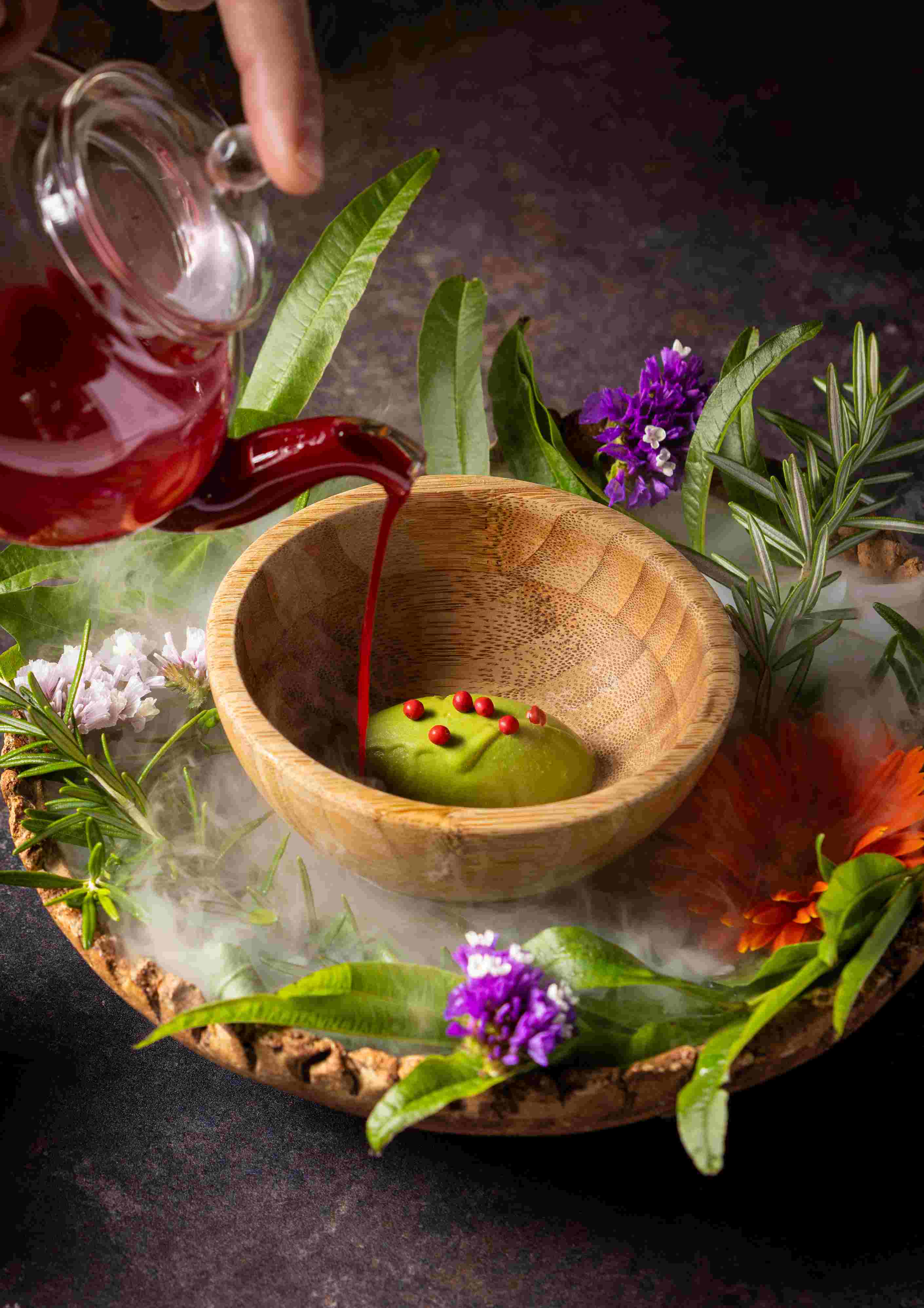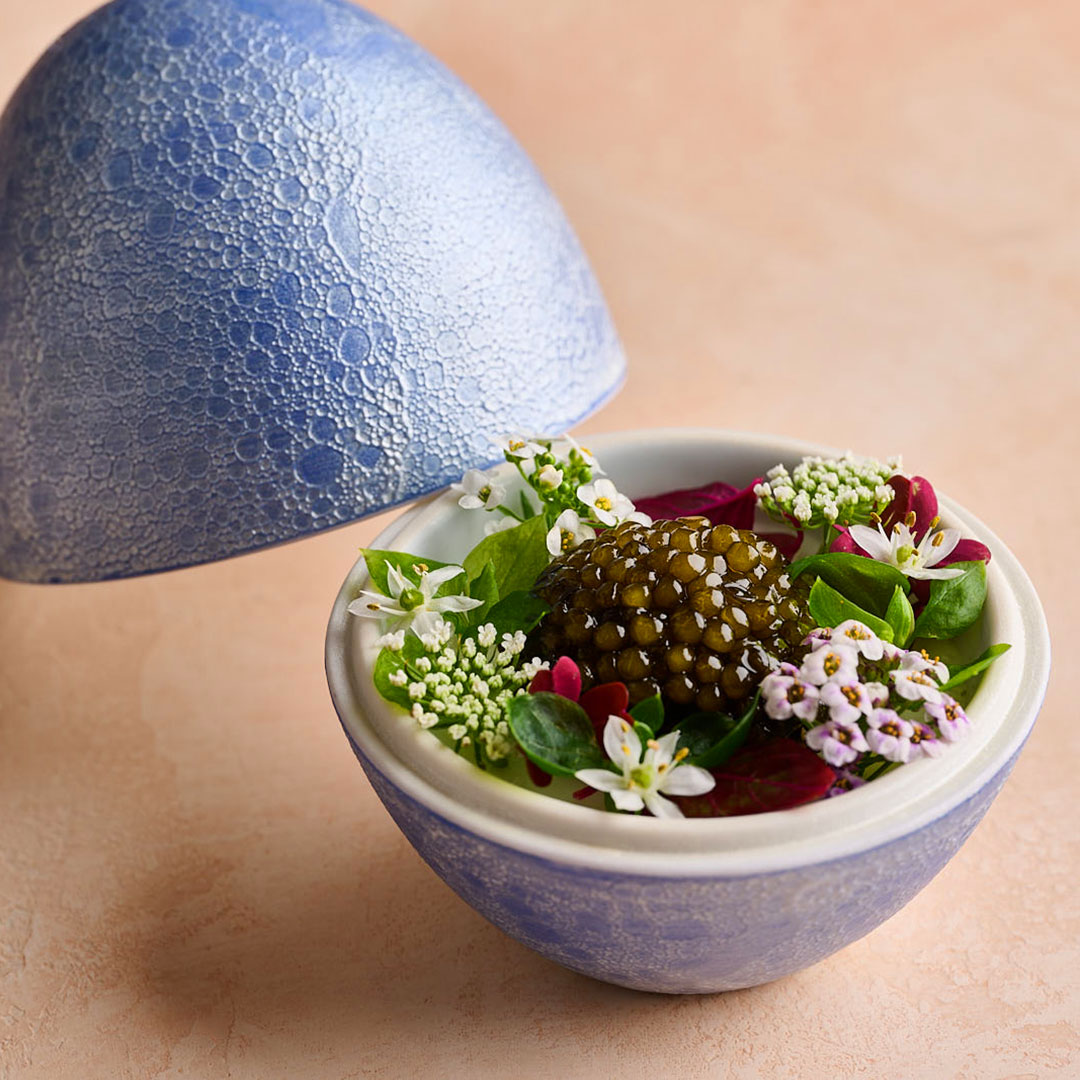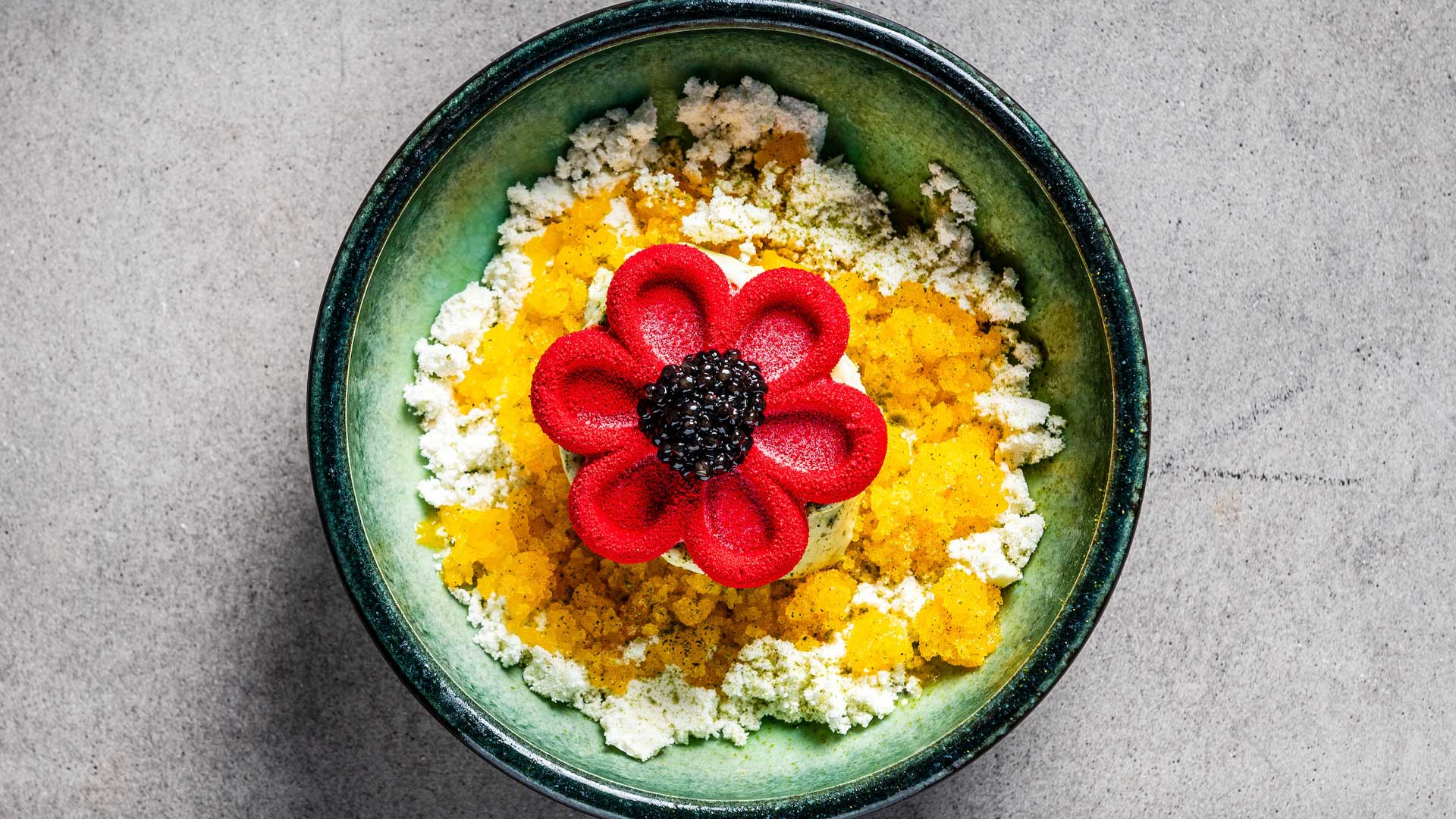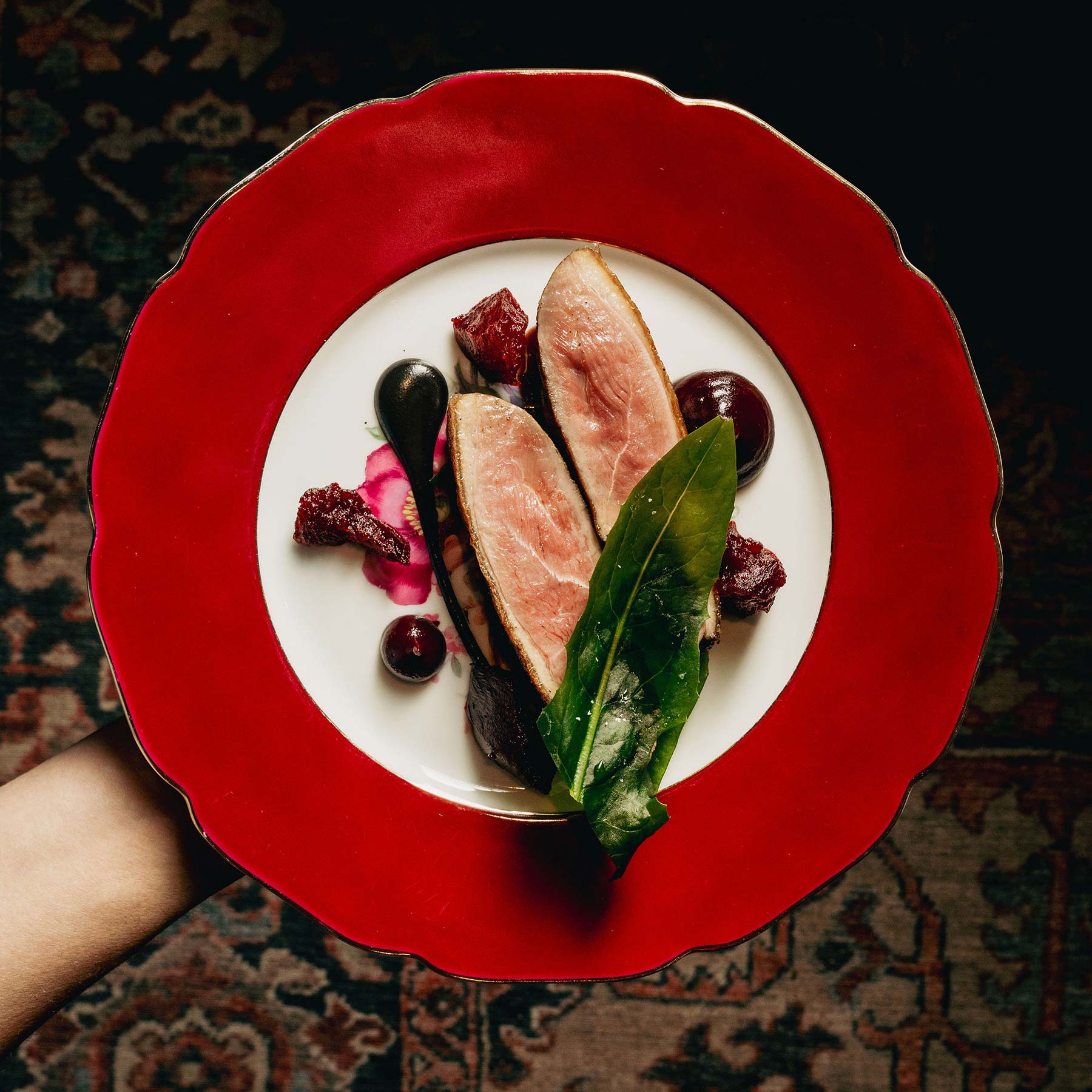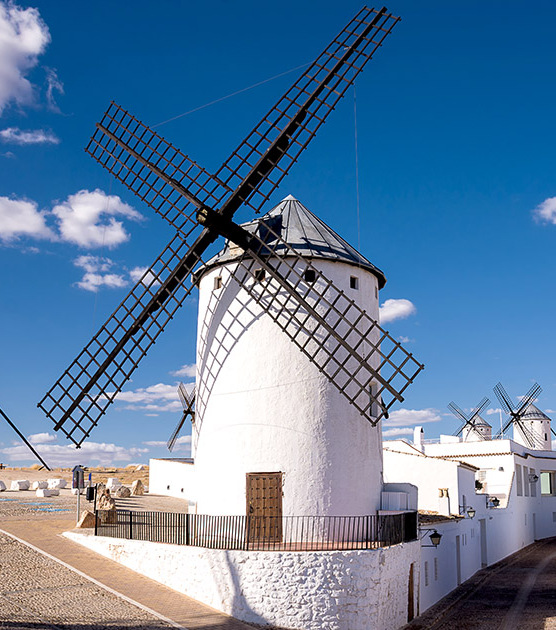Every July, the Spanish region of Navarre makes international headlines for the Festival of San Fermín, which is anchored by the spectacular running of the bulls. What remains constant for the Navarrese people, however, is the generosity of nature. They are blessed by a multitude of terrains including the towering mountains of the Pyrenees and the valleys between them, verdant flatlands and the semidesert Bardenas Reales – it says a lot about the area when its most “arid” piece of land is declared a Biosphere Reserve by UNESCO.
RELATED: The First MICHELIN Key Hotels: All the Keys in Spain

Such beautiful landscapes are also the birthplace of excellent food ingredients. The Ebro Valley in southern Navarre is the heartland of agriculture in Spain, remarked for vegetables such as asparagus, tomato and bell pepper. These, along with lesser-known plants like cardoon and borage, freshwater fish, truffle and other Mediterranean specialities, have been the cornerstone of a cuisine that prides itself on freshness and layered flavours, something local chef David Yárnoz knows very well.
Yárnoz’s restaurant El Molino de Urdániz has been awarded two stars by The MICHELIN Guide Spain for years, and is one of the recipients of the Green Star in the country. Located in a 150-year-old country house just outside the regional capital Pamplona, the restaurant has diligently championed the natural and cultural legacy of its native territory ever since it was opened by Yárnoz’s parents three decades ago.
RELATED: What is a MICHELIN Green Star?

Mountains and Pastures on a Dining Table

Some of these suppliers were brought to Yárnoz's attention through word of mouth, but many others were the result of an extensive research process. Since the COVID pandemic gave him and his team a break from operation, they took on a region-wide survey to locate excellent craftsmen that do not have the budget to reach the mainstream. To call it an anthropological study might not be a stretch, judging by how closely they follow the story of each producer.
“There’s this guy who grow pigs in Lecumberri, 20 minutes from where we live. It’s a breed called Pio Negro (also known as Euskal Txerria). He is very committed to the whole life cycle of the animals. The pigs live in the middle of the mountains and open fields with lots of hectares of space to roam around. It is paradise.” Yárnoz takes the pork chops coming from these pigs and cures them with salt and spices, which are then served with a beurre blanc sauce seasoned by caper water and sherry wine. Navarrese caviar and texturized fat from the same pigs impart richness on the final dish.
“In terms of wine, we found a couple in the Valle del Bastán, the northernmost point in Navarre where wine is made. Both of them are engineer. They started five or six years ago with a single barrel in their garage. The white wine they make is very special because it’s from the chacoli grape, a native variety from the north that is recently being rediscovered,” he added.

The hyper-locality of the ingredients is accentuated by the appearances and flavour profiles of the dishes, as showcased in the ethereal-looking dessert Mar y Montaña. On top of a pine nut cream base lay seaweed crumbs, caviar, tender pine needles and smoked resin. Though some of these components are not commonplace in sweet courses, the juxtaposition of floral, marine and smoky elements injects great complexity to the dish and etches the vistas of mountain and sea reminiscent of northern Spain. The pine nut cream, pine needle and resin represent the pine forest around Urdániz, while the caviar and seaweed hark back to Yárnoz’s formative days in coastal San Sebastián. He also emphasized that the fish roes from Navarre are imbued with a nutty aroma which complement the pine nut beneath them.
Reversing Climate Change from the Kitchen
As passionate about the local environment as Yárnoz is, climate change is imaginably a serious concern. Agricultural businesses have to contend with the consequences of the abnormally low temperatures this summer, which, combined with heavy rain and hail, have damaged and postponed the harvest of tomatoes and other crops. Even scarier was a plague for boxwood two years ago. The tree species is one of the most common in the Pyrenees, and its population was almost entirely consumed by pest brought by extreme weather patterns. The chef recalled how boxwood timber, having a high level of hardness and few pores, was used by his grandfather to carve kitchen utensils. If situations like these continue to develop, the face of Navarre, be it natural or cultural, could be completely altered.
RELATED: Sustainable Dishes from MICHELIN Green Star Restaurants in Asia

He therefore takes matters into his own hands. From sourcing to energy consumption, lots of thoughts go into keeping waste to a minimum – and making something cool while doing so. Since salted cod stew ajoarriero is routinely on the menu of Origen, Yárnoz’s other eatery focusing on classic Navarrese fare and a Bib Gourmand establishment, a large amount of fish skin is left behind. He had it dispatched directly upstairs to El Molino de Urdániz and paired it with cod-flavoured foam and homemade bell pepper extract. In turn, the bell pepper trimmings are recycled to prepare shiokoji to season other food items. Dishes like this send diners a clear message: being resourceful is an act of creativity.
Conversely, Origen also takes in leftover ingredients that are still fresh from its fine dining sibling. The cuisine of Navarre is about stretching the potential of humble produce, after all. A good example is menudicos de cordero, a traditional stew with lamb’s feet, tripe and blood. The dish name literally means “little entrails of lamb” and can hardly be found in restaurants nowadays. Scenes of his grandmother cooking the stew are deeply etched in Yárnoz’s memory, and so he turns it into a rite of passage, as every newcomer cook has to learn to make it.
In this way, the two joints, while taking on separate culinary directions, work in perfect synergy with one another to help the chef promote the gastronomy of his birthplace and a sustainable paradigm in food.
RELATED: How to Minimise Food Waste at Home, According to MICHELIN Green Star Restaurant Chefs

Excellent Produce Knows No Borders
Thousands of kilometers away, El Molino de Urdániz’s Taipei outpost was unveiled in 2019 and was awarded two MICHELIN Stars. In this younger outlet, Yárnoz gives diners a taste of Navarre through various inventive dishes, but with produce sourced locally from Taiwan. For that, he led his team around the islands to hunt down the freshest crops and catches. The umami of the squid and sea urchin in Penghu left the strongest impression in his mind.“We have been working in Spain for 30 years, and we still find new producers that deliver quality ingredients we are looking for,” he said. “In comparison, we have been in Taiwan for just five years. We have an important network on the island now, but we will continue to learn.”
This cross-continent culinary exchange draws gourmets in Spain closer to Taiwan’s gastronomic culture too. Ever so keen on knowing where different foods come from, Yárnoz took full advantage of his time in Taiwan to scour stellar local tea, bring it back to Navarre and serve it at the end of a meal, concluding a carefully conceived dining experience. Whichever El Molino de Urdániz it is, one can expect to put the greatest gifts from nature into their bellies.









